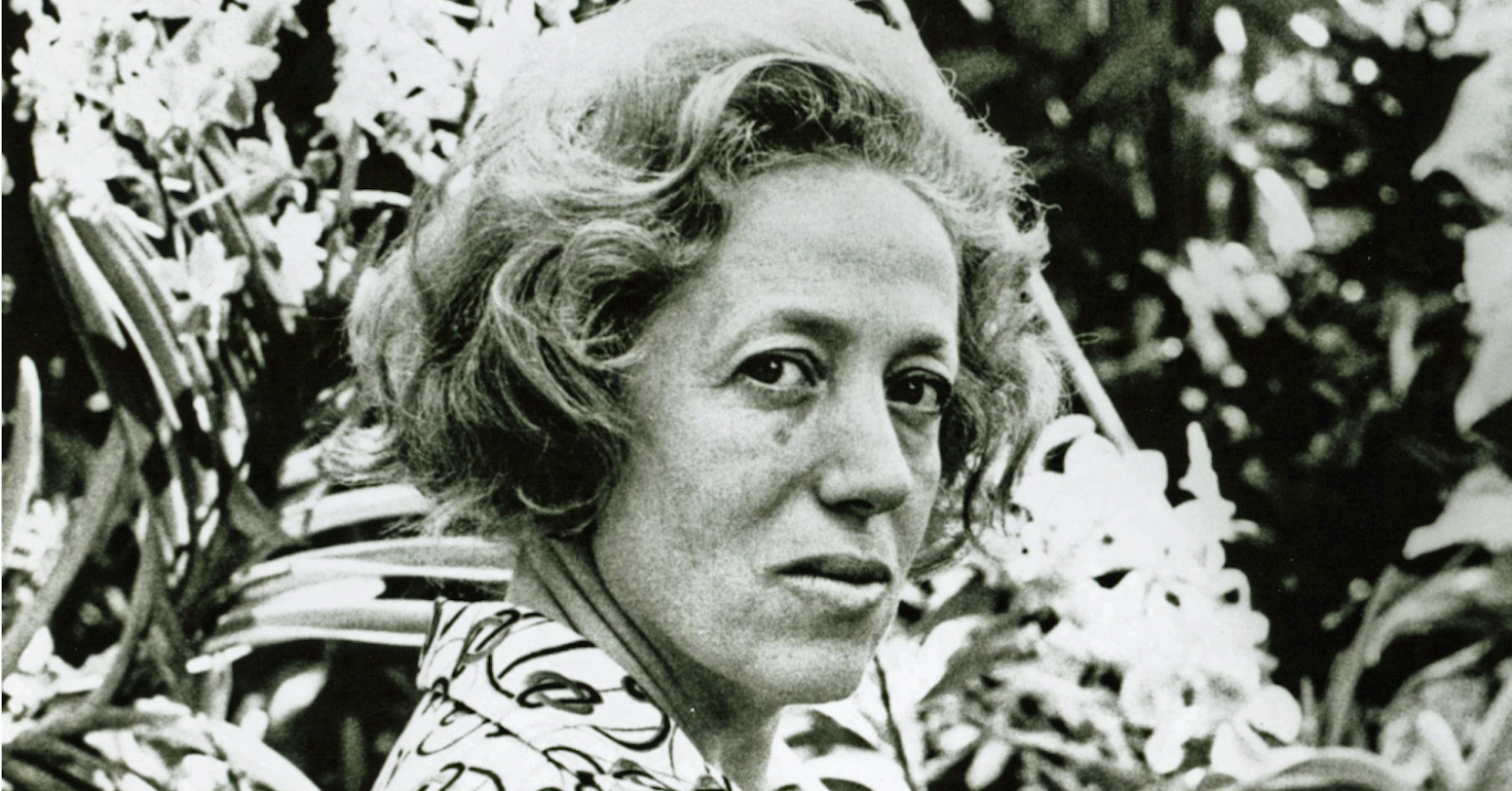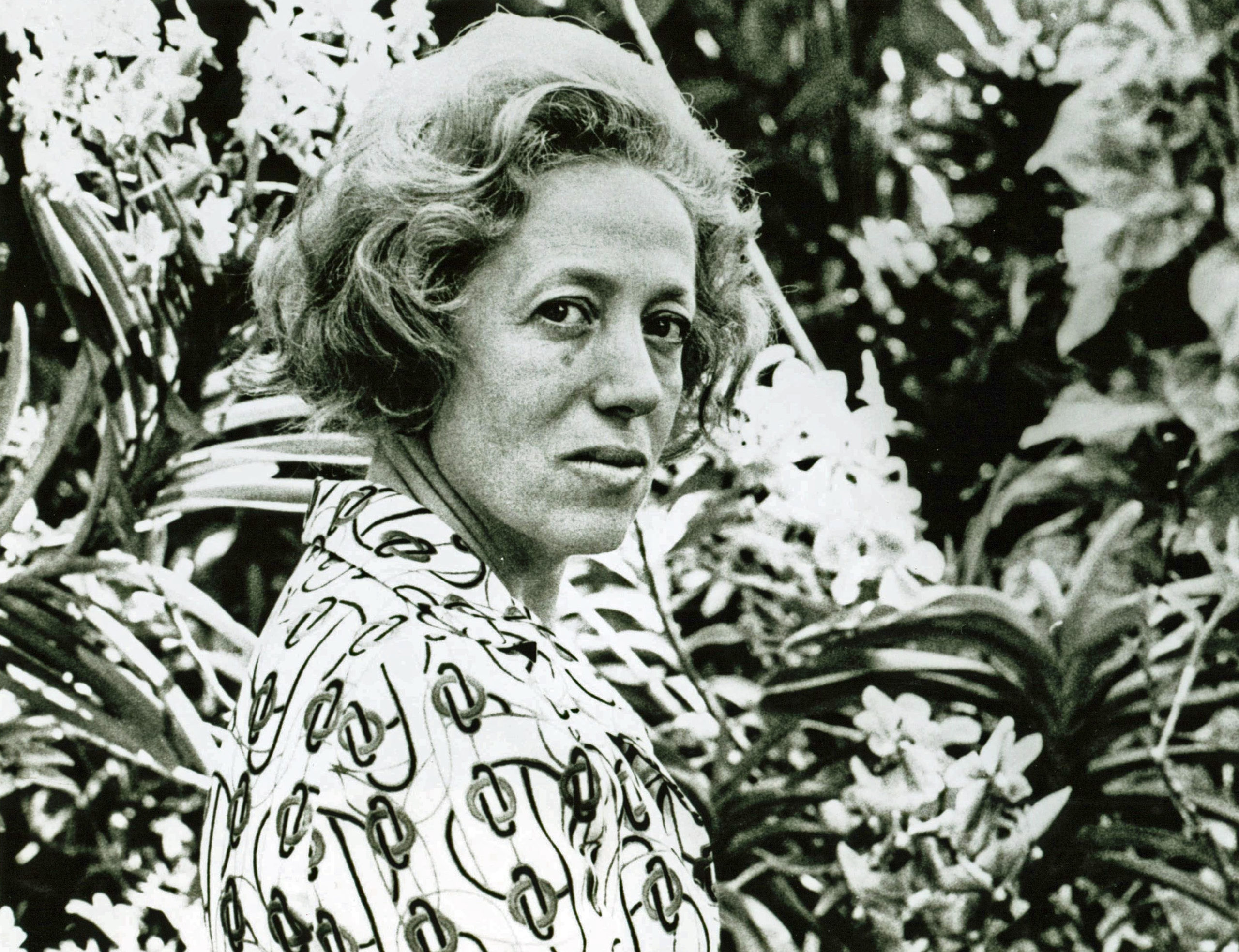Clara Diament Sujo, Advocate of Hedda Sterne’s Late Work
October 22, 2020

We were saddened to learn of the recent passing of Clara Diament Sujo. Sujo was a pioneering art dealer and critic with galleries in Caracas and New York City. Among her many contributions to the art world, she served as an advocate of Hedda Sterne’s work and legacy in the last decades of Sterne’s working life. At the time, Sterne was under-recognized and had macular degeneration.
Sujo’s Early Life and Career
Sujo was born Clara Diament in 1921 in Buenos Aires to Jewish émigrés. As she told Avis Berman in a 2010 interview for the Archives of American Art, she enjoyed assisting her father in his home office when she was growing up. He had a business exporting Patagonian fur garments for a Jewish market in Russia and Poland. From an early age, art fascinated her. She speculated it might have been because her childhood home contained a forbidden room filled with art, which included a nude painting. She could glimpse it through a window.
From 1943 to 1946, Sujo worked in Chicago for Abbott Laboratories. She spent much of her free time in the city visiting museums and galleries. Upon returning to Buenos Aires, she knew she wanted to pursue a career in art and so immersed herself in the city’s vibrant intellectual and artistic milieu. She attended the famed art history lectures of the poet Jorge Romero Brest, an influential art critic, at a bookshop in the city. She also served as the editor for the journal he founded, Ver y estimar, and translated into Spanish the work of several African-American writers whom she felt in sympathy with, among them Richard Wright and Langston Hughes.
Sujo’s Work to Bring Recognition to Latin-American Art
Sujo, her husband, and three children relocated to Caracas in the 1950s. They wanted both to distance themselves from the rule of Juan Domingo Perón and to take advantage of Venezuela’s economic opportunities. Unlike Argentina, which in Sujo’s opinion was like a cultural satellite of Europe, Venezuela seemed more closely aligned with the United States. She taught art history at a number of art schools in Caracas. In doing so, she met many talented, young artists. Recognizing that Latin-American art had yet to receive the attention and recognition it deserved, she mobilized her administrative skills, visionary acumen, and knowledge of art to build the world’s first collection of contemporary Latin American art for the Museo de Bellas Artes in Caracas.
While Sujo was a champion of Latin-American art, she was also a proponent of breaking down barriers between North and South America by thinking of an “Art of the Americas.” With this goal in mind, she opened the art gallery Estudio Actual in Caracas in 1968. Years later, in 1981, she opened CDS Gallery in New York. There she showed artists from North America alongside artists from Central and South America. It was in that capacity that she met—and advocated for—Hedda Sterne.
Sujo’s Advocacy of Hedda Sterne
During her career, Sujo championed many women artists, including Mercedes Pardo, Louise Nevelson, Marisol Escobar, and Elsa Gramcko. It wasn’t because she was concerned with being “fair” in her representation, but because she responded deeply to their work. The art critic and dealer, Katharine Kuh, introduced Sujo to Sterne in the early 1980s. By that time, Sterne, who had been the sole woman in the famous 1951 Life magazine photo of “The Irascibles,” was in her seventies and living an increasingly solitary life. In some ways, she’d been left behind by the 1980s art world. Even though she’d exhibited in dozens of exhibitions since 1941 and her work was in many major museums, she had fallen out of the public eye.
When Sujo visited Sterne in her studio, she was astonished that an artist of Sterne’s knowledge, sensibility, and dedication had not been given the recognition she deserved. As she had decades earlier with Latin American art, Sujo took Sterne on as “a very special cause.” The two women became friends. Between 1982 and 2004, Sujo organized nine solo exhibitions of Sterne’s work for CDS Gallery. She also helped to organize a 2006 retrospective of Sterne’s work at the Krannert Art Museum (University of Illinois at Urbana-Champaign).
Sterne’s last exhibition at CDS was entitled “Ghosts.” It included a series of drawings Sterne had been working on that she said were “dictated” by “personages and memories from the past.” She said they appeared of their own accord on the blank paper, as if trying to establish a dialogue with her. She dedicated a many of these Ghost drawings to Diament, who Sterne referred to as “Clara, the mama of Orchids.”
“The Capacity to See and Make Seen”
In her Archives of American Art interview, Sujo reflected on the fact that she was 88 years and 10 months old and had been working since the age of 17. She’d been guided throughout by the formative influence of her father, who, like Sujo, had worked in service of the causes that moved him. She’d also been guided by Jorge Romero Brest and his transformative insights into art. His “was an extraordinary inspiration,” Sujo said of Brest. “The capacity to see and make seen.” The same could be said of Sujo herself.


Leave a Comment